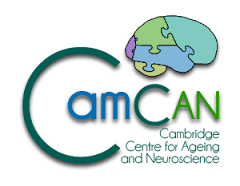Expanding the genotype and phenotype spectrum of SYT1-associated neurodevelopmental disorder.
Melland, H., Bumbak, F., Kolesnik-Taylor, A., Ng-Cordell, E., John, A., Constantinou, P., Joss, S., Larsen, M., Fagerberg, C., Laulund, L. W., Thies, J., Emslie, F., Willemsen, M., Kleefstra, T., Pfundt, R., Barrick, R., Chang, R., Loong, L., Alfadhel, M., … Baker, K. (2022).
Genetics in Medicine, 24(4), 880 – 893.
Summary
- The article describes 22 people diagnosed with differences in the SYT1 gene.
- The age range when information was collected for the article was 12 months to 26 years old, with most being children or early adolescents.
Symptoms
We found that there is a wide range of neurodevelopmental abilities and difficulties amongst people with Baker-Gordon Syndrome. Some children are not able to walk on their own by late childhood; some do not use words to communicate; some have great difficulty controlling the movements of their arms and legs. Other children are able to walk in early childhood but may have balance and co-ordination difficulties. Some children can speak using simple words. All people with Baker-Gordon Syndrome need support with their communication and learning.
Vision problems are very common in Baker-Gordon Syndrome, such as difficulties with co-ordinating eye muscles (squint), jerky eye movements, and visual processing problems. Abnormal EEG (electroencephalogram) recordings are observed in most people with Baker-Gordon Syndrome.
People with Baker-Gordon Syndrome can experience a range of physical health difficulties, although these vary a great deal from person to person. Common problems include gastro-oesophageal reflux and disrupted sleep patterns.
Epilepsy (seizures, fits) is not common in Baker-Gordon Syndrome, although many children are tested for epilepsy or trialled on epilepsy treatments.
Emotional, social and behavioural difficulties are very common in Baker-Gordon Syndrome. Overall, we did not find that these types of difficulties affect young people with Baker-Gordon Syndrome more than young people with other neurodevelopmental conditions. However, there are some areas that seem to be particularly challenging for people with Baker-Gordon Syndrome. These include variation in emotions and behaviour, switching from calm to distressed or overactive, for no particular reason. Many young people with Baker-Gordon Syndrome have some repetitive movements or actions, especially chewing on their fingers. These problems particularly affect children with Baker-Gordon Syndrome who have movement difficulties and major communication difficulties.
SYT1 gene differences (variants)
Altogether, there are 15 different gene differences, known as “variants”, described in this paper (5 were previously published). Some variants are found in more than one person with Baker-Gordon Syndrome. No SYT1 variants were inherited from a parent – they all occurred “de novo” in each child, meaning randomly during conception. SYT1 (synaptotagmin-1) is a protein in our brains that is essential for communication and signalling between brain cells. Each gene variant has a slightly different impact on the function of SYT1. We performed computer simulations of how these variants might affect the SYT1 protein, which suggested that they are all likely to impair the proper function of SYT1 in some way.

Summary was written by Holly Melland and Kate Baker
What is next?
- We are now carrying out further research focusing on different aspects of SYT1-associated neurodevelopmental disorder.
- We are currently producing a developmental timeline of SYT1-associated neurodevelopmental disorder, which includes the broad spectrum of characteristics present in individuals with SYT1 and how the characteristics might change over time.
- We are planning on collecting at-home EEG measures of individuals with SYT1-associated neurodevelopmental disorder.
- We are also investigating the feasibility of generating a stem cell model of SYT1-associated neurodevelopment disorder. We hope that by generating and validating an in vitro (test-tube) model, we can better understand how SYT1 variants lead to differences in brain development.
Resources
- You can read the full paper here.
- SYT1-specific resources

 MRC Cognition and Brain Sciences Unit
MRC Cognition and Brain Sciences Unit

